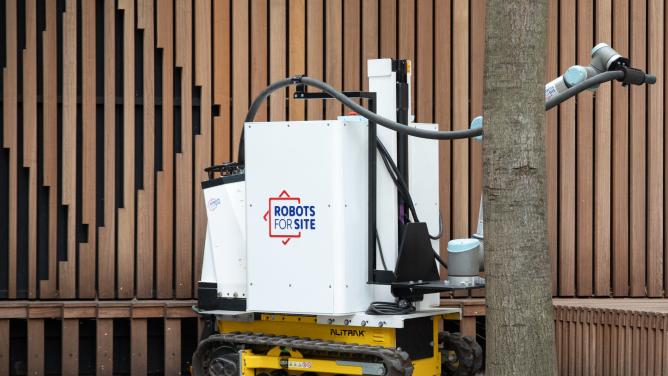While environmental activists are worried about the impact of 5G on the environment and the general population wants to know what it will really change, manufacturers are excited about its potential to disrupt production lines. Mobile technology, the backbone of industry digitisation, would mark the advent of the fourth industrial revolution (4IR). Following on from the invention of the steam engine, assembly lines and automation, the Internet of Things (IoT) should make it possible to network production tools and create a smarter factory.
For neophytes, the terms 5G, IoT and 4RI probably don’t mean much. They simply refer to the way in which machines fitted with sensors can communicate with each other concerning their status and how they are functioning. In doing so, they generate a large amount of information that allows you to virtually model the production line, making it easier to manage and maintain.
Consulting firm McKinsey gives the example of a gold mine that, thanks to sensors, was able to detect abnormal changes in oxygen levels during a phase of development. Once the malfunction was corrected, yields were improved by almost 4%, generating more than $20 million more per year.
A burst of innovation
Information and communication technologies are at the core of this system, which is benefiting from progress in big data and artificial intelligence. Major groups are already developing innovative solutions to initiate their transition to smart factories. According to the European Patent Office (EPO), there has been a significant acceleration in the number of patents related to connected objects and 4IR in recent years.
“Between 2010 and 2018, global patent filings for these technologies, which concern smart connected objects and span the Internet of Things, big data, 5G, and artificial intelligence (AI), grew at an average annual rate of almost 20% – nearly five times faster than the average of all technology fields.” says the organisation. The main innovation clusters are located in Seoul, Tokyo and Silicon Valley. In Europe, they are located mainly in Germany, but also in Paris, London and the Netherlands. The development of 5G has been identified as the main driver and common denominator behind these innovations.
The smart factory
In the logistics sector, 5G is incredibly promising. The two European leaders Nokia and Ericsson have been testing their technology for several years in the ports of Le Havre and Livorno. Now controlled remotely and interconnected by 5G, gantries and cranes are better coordinated and are boosting productivity by 25%. Procedures for docking ships have also been optimised, saving time and fuel. In partnership with Orange Belgium, the Port of Antwerp has set up an Industry 4.0 campus to experiment with new smart cameras, the use of drones and self-driving vehicles.
5G will also make workers safer and more efficient: firstly, by facilitating the operation of robots able to carry out the most difficult tasks, but also in man/machine cooperation. Thanks to the increased flow of information, augmented reality and virtual reality will be scaled up in factories to support certain operations. By improving communication latency and reliability, the remote operation of machines and equipment can now be made more widespread.
Complementary waves
Using sensors, the flow of a pipeline or changes in city traffic can be measured and transmitted regularly to a control centre which will be notified of any anomalies. In agriculture, monitoring a field’s temperature or humidity can be done automatically, as Huawei’s experiments show in China and Brazil. To carry out this kind of monitoring, long-range, low frequencies may be enough, such as Sigfox and LoRa, which are already contributing to develop the Internet of Things.
This mass of data makes it possible to model factory operations in real time. It supports the operator’s decision-making, but can also trigger automated protocols. Such modelling also offers flexibility in production lines. It makes it easier to adapt to changes in demand, or even modify a product directly.
According to IHS Markit, 5G is expected to generate $12.3 trillion and 22 million jobs by 2035. Numerous industrial 5G applications are yet to be discovered.


